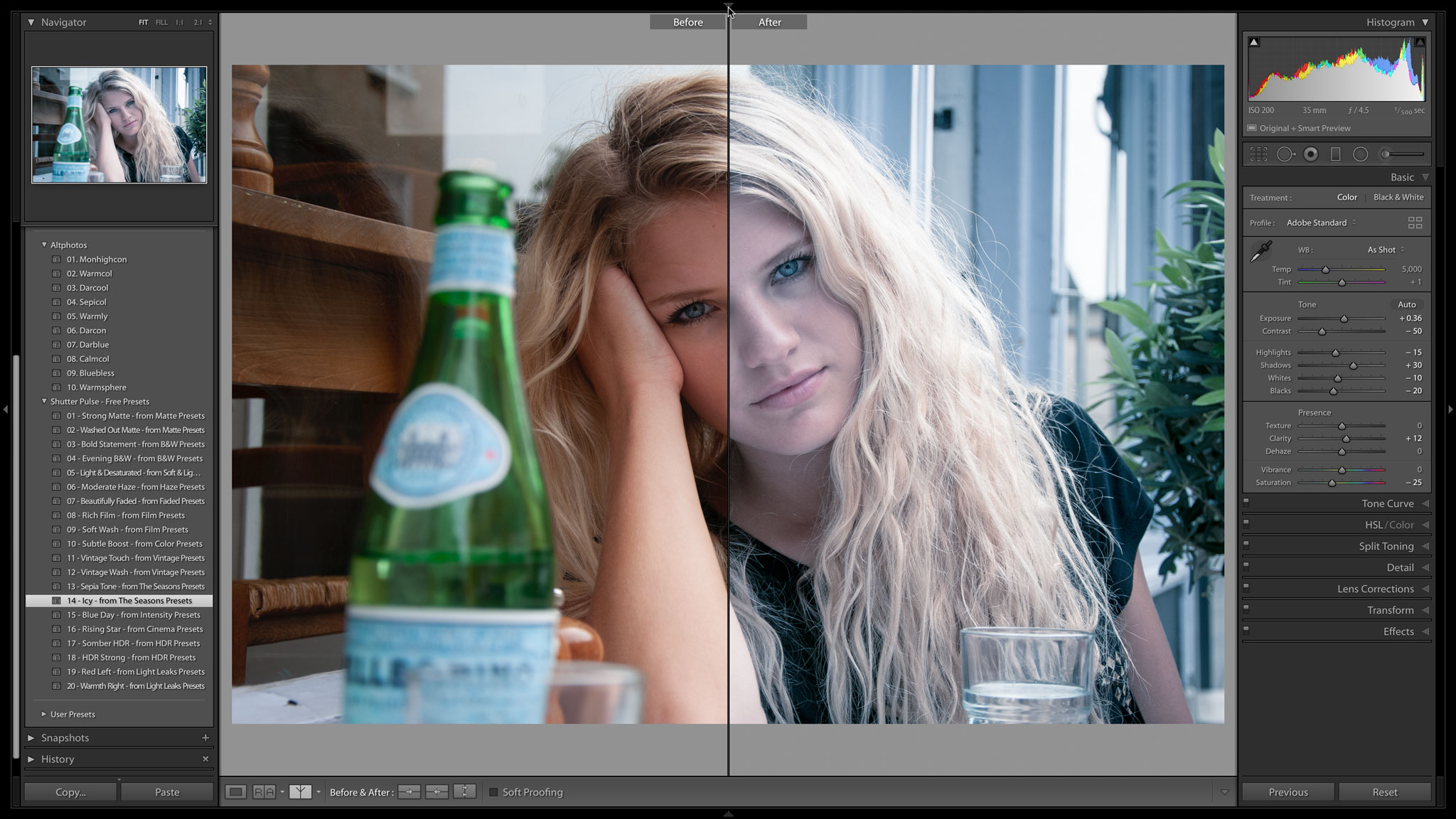

- #LIGHTROOM PHOTO EDITING WITH DARK PANELING SKIN#
- #LIGHTROOM PHOTO EDITING WITH DARK PANELING SOFTWARE#
- #LIGHTROOM PHOTO EDITING WITH DARK PANELING SERIES#
We can try to recover some of that detail by bringing the highlights down using the Highlights slider.Īfter lowering the highlights we can see a little more of the texture from the water’s surface. In the image above, there are spots of bright highlights above the subject where we’ve lost a bit of detail. Oftentimes unpredictable lighting conditions can cause highlights to be too bright or shadows to be too dark, resulting in the loss of information. This section is focused on adjusting the tonal (light) values in a photo. The goal is to get colors to be as true-to-life as possible. The white balance sliders in Lightroom give you the same control as if you were adjusting the white balance setting on your camera (especially if you’re working with RAW files.) Not only can you adjust color temperature, but you can also shift the tint to compensate for lighting that appears too green or too magenta. We’ve all taken photos where the white balance was off, resulting in a blue color cast (a cool color temperature) or an orange color cast (a warm color temperature). White balance is a tool that helps the camera’s sensor adjust colors according to the environmental lighting conditions. White BalanceĮven if you’re not familiar with the photo editing process, you’ve probably seen the white balance setting on your camera. For now let’s look at the options within the Basic menu.
#LIGHTROOM PHOTO EDITING WITH DARK PANELING SERIES#
We’ll cover many of these tools later in the series when we get into advanced editing. The majority of the editing features in Lightroom can be found in the right-hand sidebar of the Develop Module. Let’s dive in! Basic Adjustments in Lightroom Best of all, all of the adjustments we make in Lightroom are completely non-destrucive! That means we can reset any individual settings, or get back to our unedited original image at any time. Equipped with tools to fix exposure, color tone, fix lens issues, and more, it has everything we need to take our photos to the next level.
#LIGHTROOM PHOTO EDITING WITH DARK PANELING SOFTWARE#
The Develop Module is powered by Adobe Camera RAW, Adobe’s software for processing RAW files (although it does work on most other image file types like JPEGs). Now that we’re ready to start making some edits, it’s time to turn our attention the Develop Module. Up until now we’ve spent almost all of our time in the Library module, organizing and prepping our photos for the edit. Now that we have some direction, it’s time to start editing! Let’s take a look at the interface where the post-production magic happens in Lightroom: the Develop Module. Once we’ve checked those boxes, we can move on to some more creative decisions. We want colors to look natural, we want as much detail as possible throughout the highlights, midtones, and shadows, and we want the subject of the image to be clear. There are countless other questions you could consider, but we find that these apply to almost any photo and immediately help get us on the right track.
#LIGHTROOM PHOTO EDITING WITH DARK PANELING SKIN#
Do the colors look natural? Do the skin tones look natural?.You can certainly take each edit as far as you want, but we recommend starting simple, building a strong foundation upon which you can make more advanced style choices.īefore making any basic adjustments, there are some question you can ask yourself that might help guide your editing decisions. This tutorial is mostly focused on small adjustments that will have a powerful cumulative effect on your images. When it comes to photo editing, there are no rules and endless creative possibilities. No matter where you fall on the spectrum, we’re here to help you get started and show you what’s possible. Others go all out, using post-production to explore new creative ideas that weren’t possible with just a camera.

Some photographers prefer to edit very lightly, believing that the photography should stand on its own. Now we’re ready to move on to the most satisfying step of the Lightroom Classic workflow–photo editing!īefore we get into it, let’s ask the big question: what is the goal of photo editing? Ask two different photographers and you’ll likely get two very different answers. Then we went through and selected our favorites. We began by importing and organizing our photos in Lightroom.


 0 kommentar(er)
0 kommentar(er)
